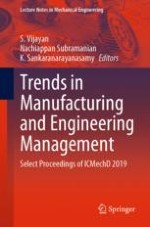2021 | OriginalPaper | Chapter
Artificial Neural Network and Genetic Algorithm-Based Models for Predicting Cutting Force in Turning of Hardened H13 Steel
Authors : K. Leo Dev Wins, B. Anuja Beatrice, D. S. Ebenezer Jacob Dhas, V. S. Anita Sofia
Published in: Trends in Manufacturing and Engineering Management
Publisher: Springer Singapore
Activate our intelligent search to find suitable subject content or patents.
Select sections of text to find matching patents with Artificial Intelligence. powered by
Select sections of text to find additional relevant content using AI-assisted search. powered by
